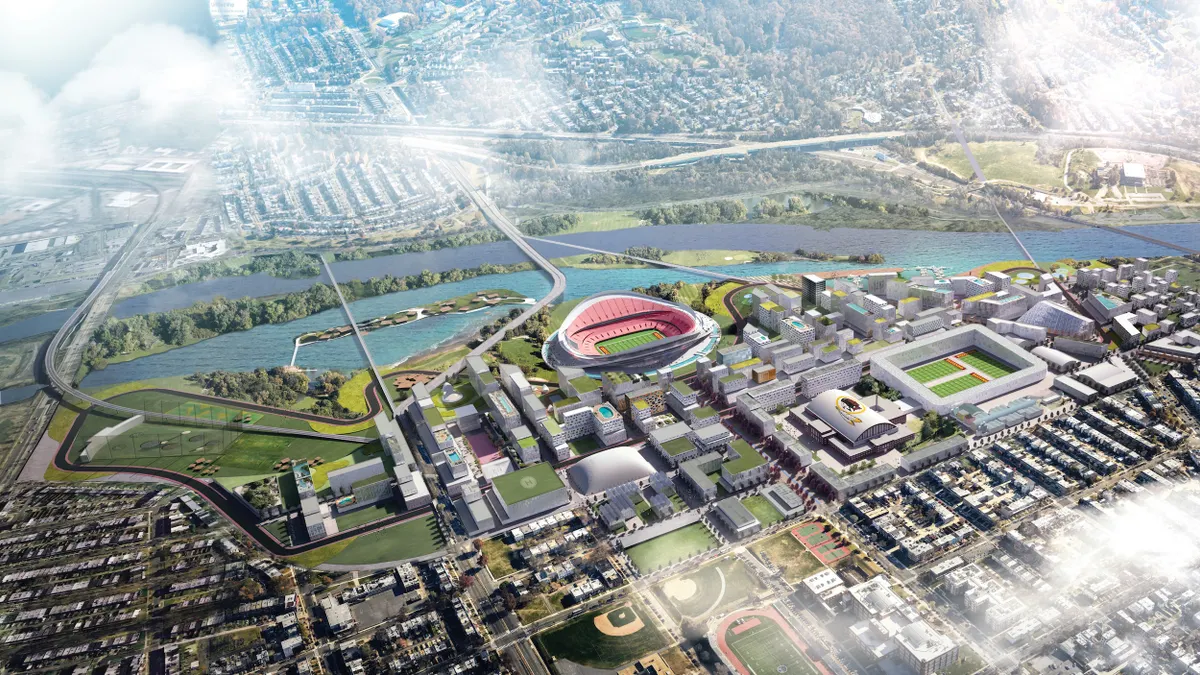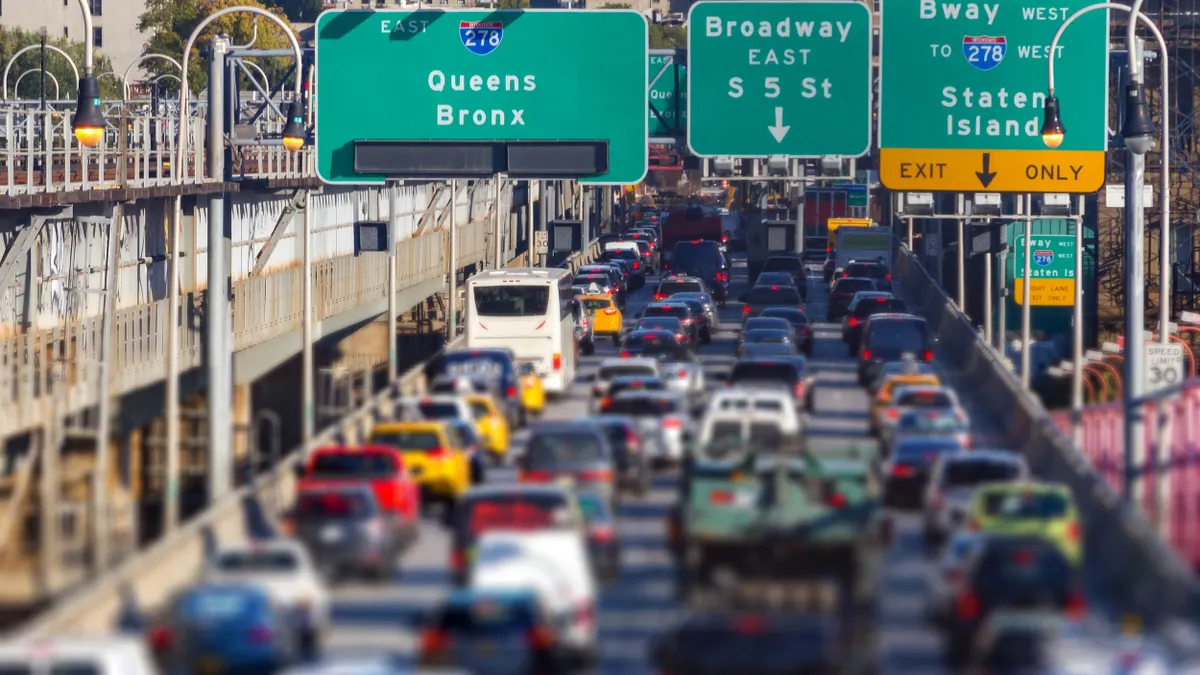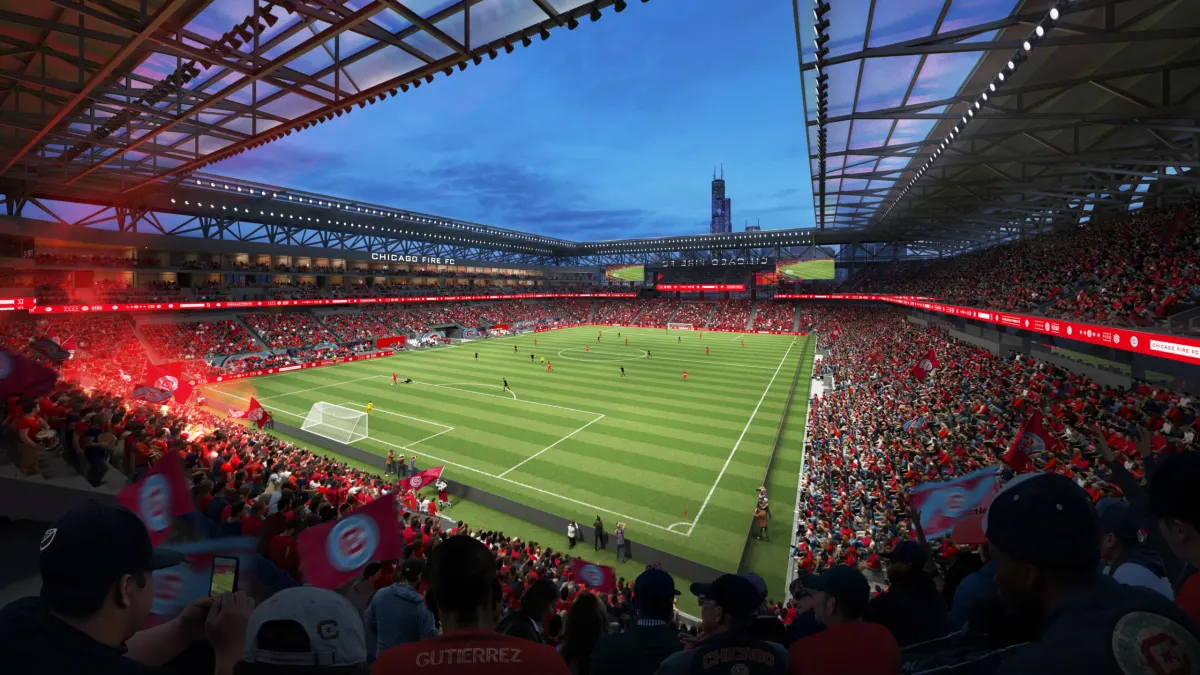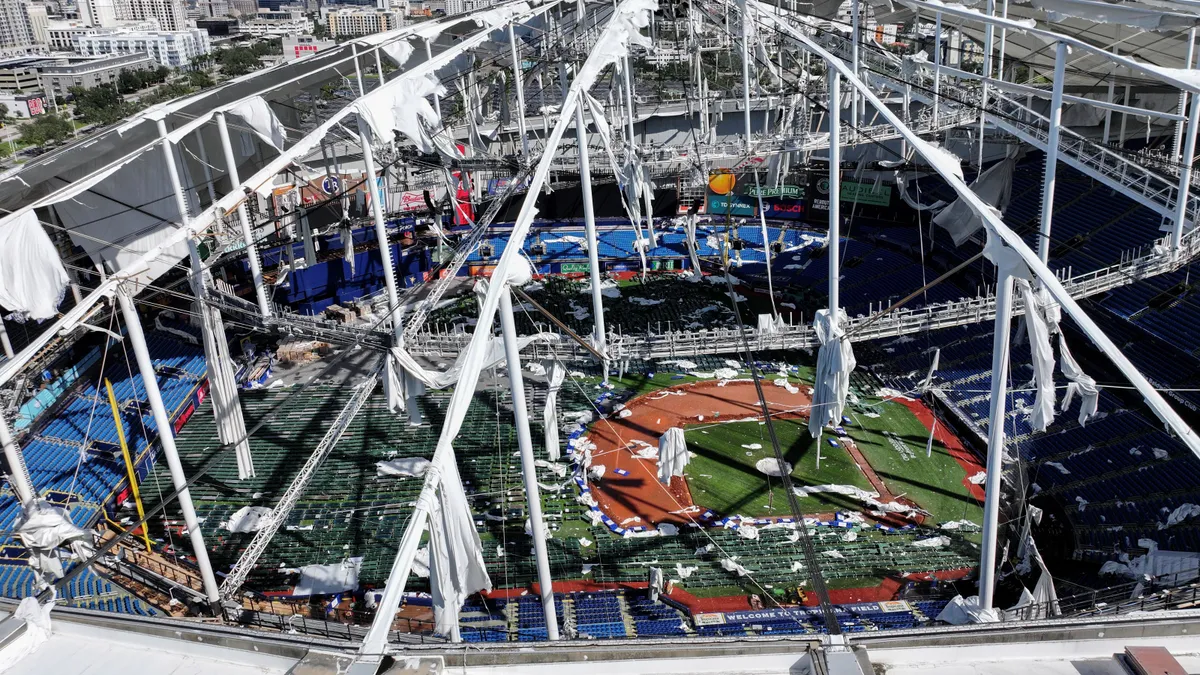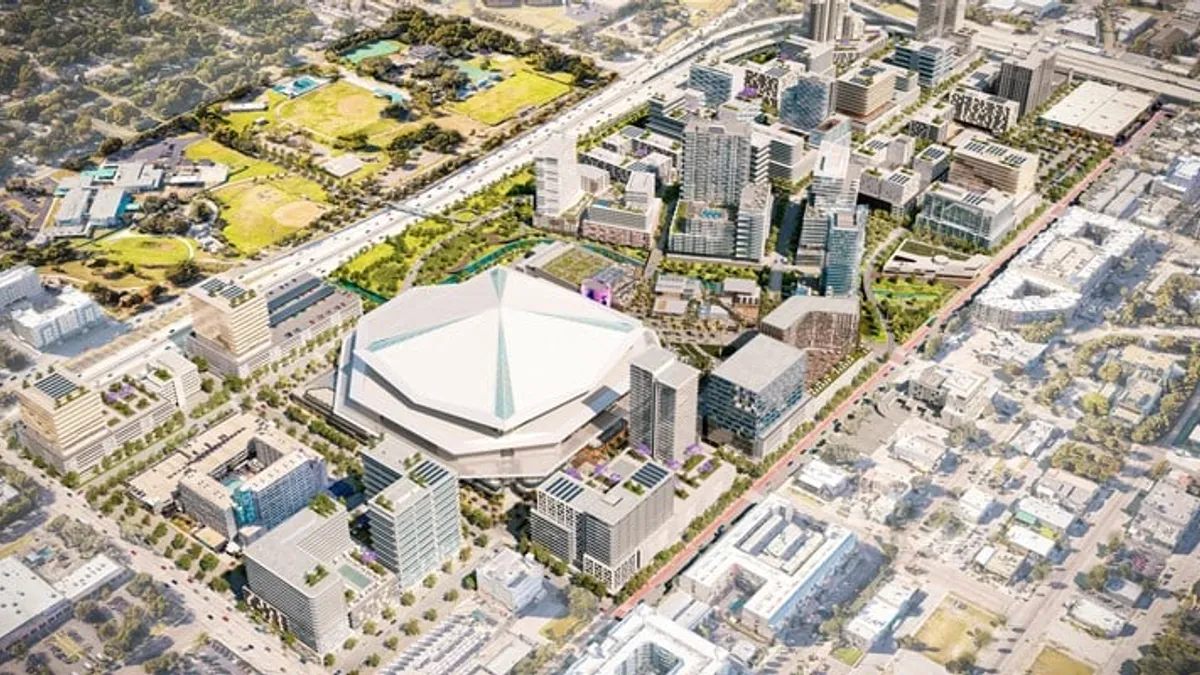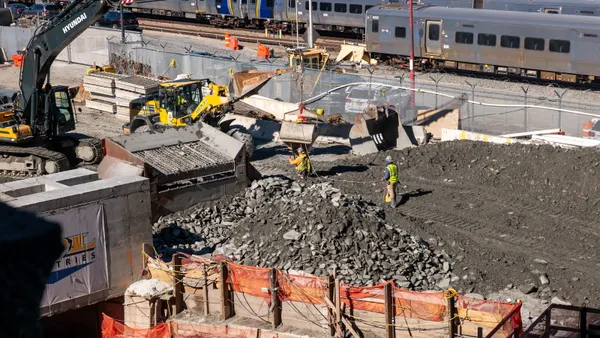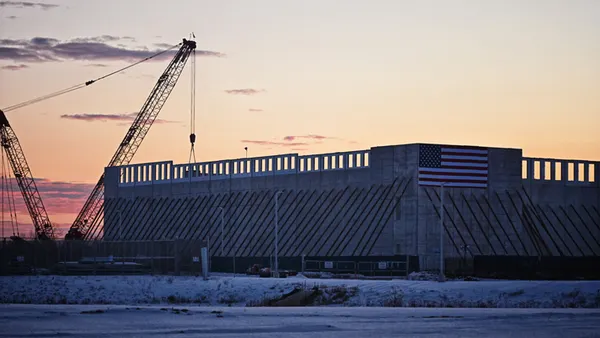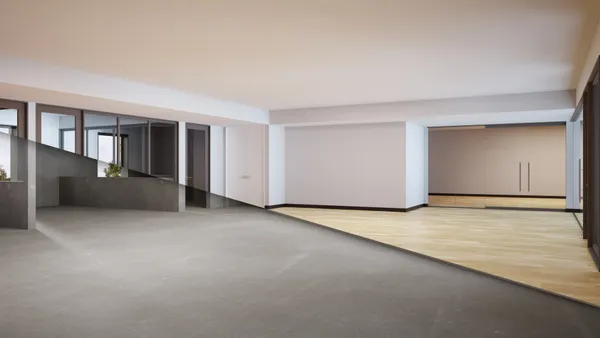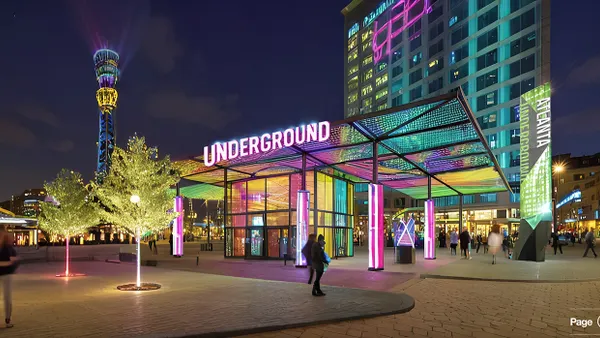When the deep-pocketed Denver Broncos ownership group announced its plans for a new football stadium in September, city and state leaders applauded its pledge to privately finance both the stadium and a new mixed-use district surrounding it.
But the Broncos’ announcement contained some notable fine print. The multibillion-dollar stadium complex won’t be entirely funded by the team’s owners, which include members of Walmart’s Walton family.
“The project will include city and state support for public improvements,” the announcement noted.
Sports economic experts say this type of hybrid mainly-private-but-partially-public sports stadium financing is becoming increasingly common as a new era of stadium construction kicks off.
Driving factors include research showing that taxpayer-funded stadiums don’t boost the local economy, voters’ reluctance to approve the skyrocketing costs of new stadiums and growing use of less obvious public funding like tax increment financing and property tax forgiveness.
The shift from public to private
“During the big stadium-building boom from 1992 to 2007, about two-thirds of those stadiums were financed by taxpayers,” said Victor Matheson, a professor at the College of the Holy Cross in Massachusetts who specializes in sports economics. “But then the great recession hit in 2008, and people found it pretty distasteful to spend taxpayer dollars on sports stadiums.”
Today, when people vote on taxing themselves to build a new stadium, the results are basically a crap shoot, according to a database compiled by Geoffrey Propheter, an associate professor at the University of Colorado Denver who specializes in property tax policy and sports facility economics.
Since 1980, Propheter said, there have been 81 referenda on taxpayer financing for stadiums or arenas in the five major professional sports. Only 52% have succeeded.
The most recent failure is a 2024 vote in Missouri to continue a three-eighths of a cent sales tax for 40 years to finance a new Kansas City Royals baseball stadium and improvements to the Kansas City Chiefs football stadium. Fifty-eight percent of voters rejected the tax, despite Royals’ owners pledging to pay for about half of the $2-plus billion stadium district.
“Taxpayer subsidies for stadiums aren’t popular,” Matheson said. “Not everyone likes a team. Even in places that have a rabid fandom, like in Buffalo, taxpayer subsidies for their new [football] stadium never polled much above 50%.”
Local government’s role
Some cities are avoiding taxpayer pushback by bypassing stadium votes and instead approving public funding through city councils.
According to Propheter’s database, in the last 2.5 years, there have been 38 votes by representative democracies like city councils on financing sports facilities in the five major sports leagues. All of those votes passed.
That includes the Washington, D.C., council’s 11-2 vote in September to give the Commanders football team $1.15 billion in taxpayer funds to move its stadium from Maryland to D.C. The Commanders agreed to pay $2.5 billion for the new stadium, which is expected to open in 2030.
The stadium would also anchor a residential and commercial district that the D.C budget director estimates could create $4.2 billion in tax revenue over 30 years.
This sounds good on paper, Propheter said, but there’s a hidden price. The deal exempts the Commanders from paying property taxes for 30 years. It also gives the team owners exclusive rights to develop 24 acres of land that D.C. controls around the new stadium site, in return for a lease of $1 a year for 26 years.
“This is prime riverfront property that the district could develop without the Commanders,” he said. “The council is basically mortgaging the taxpayers’ future, leaving on the table billions of dollars of rent they could charge for this land.”
One poll found that for this and other reasons, 60% of D.C. residents oppose the stadium deal the council approved.
Private funding loopholes
Many of the stadiums built in the 1990s and early 2000s had 30-year leases with the government entities that helped finance them. As those leases expire, Matheson said there’s a new wave of stadium construction — but not a new wave of public financing. He estimated that about two-thirds of stadiums currently under construction or in the planning stages are privately financed.
But as with the new Broncos stadium, that private financing can come with an asterisk.
“Look at the Carolina Panthers’ stadium,” Propheter said. The football stadium was built in 1996 with private financing and is still privately owned by the team. But last year, the Charlotte, North Carolina, city council voted to fund $650 million in stadium renovations, with the team owner paying $150 million.
“So, a stadium may start out privately financed, but that doesn’t mean it stays privately financed,” Propheter says.
In the Broncos’ case, the owners are planning to build a new stadium and mixed-use district in Burnham Yard, an abandoned railroad property near the existing stadium that the state purchased in 2021. The Denver Post reported that discussions have taken place about declaring the property blighted and eligible for tax increment financing from the Denver Urban Renewal Authority .
DURA Executive Director Tracy Huggins said if the city council adopts an urban renewal plan for Burnham Yard, it would be designated as its own urban renewal area with a dedicated TIF district. And by law, that TIF would be limited to public-purpose improvements for the site.
“That includes infrastructure like utilities, streets, sidewalks, environmental cleanup and site preparation — the elements that make redevelopment possible and accessible to the public,” she said. “For any stadium project, DURA could reimburse costs that provide a clear public purpose, such as life-safety systems or ADA compliance within certain facilities.”
Minimal loss of taxpayer dollars
Sports teams draw attention, but Matheson said it’s important for city leaders to remember they’re just one of many businesses that support the local economy.
“In the case of the Broncos, they’re a business building a new establishment — they’re no different than a mall developer or any other sort of a developer,” he said. “But when a sports team is involved, politicians lose their minds.”
Propheter said for large cities, sports are a “really tiny fraction of any jurisdiction’s overall economic activity.” He’s currently working on a book examining what’s happening in Oakland, California, after its professional basketball, football and baseball teams recently moved to other cities that offered more favorable stadium and arena financing.
“Preliminary results show we’re only talking about the city of Oakland losing a couple million dollars in sales tax a year,” he said. “With a city budget of over $2 billion a year, that’s less than a rounding error.”


